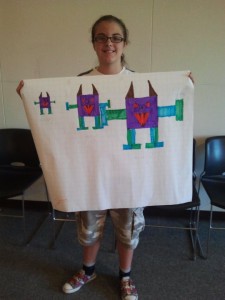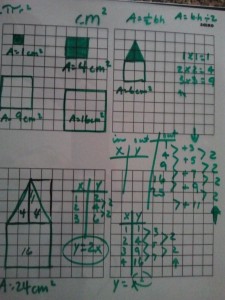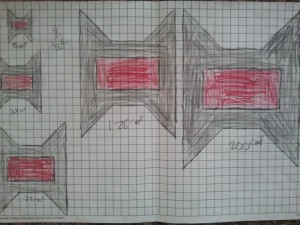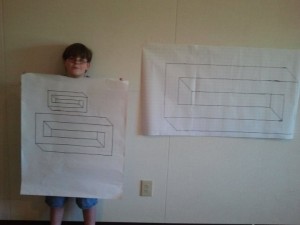The Artistic Side of Math – Area
This is one of my favorite math and art activities. That’s because it involves a mathematical pattern.
Using centimeter graph paper, we start with the basic unit which, in this case, is simply one square. I then ask students what they think the area would be if we doubled the size of the square. The first thing they blurt out before thinking is “two”.
I then use the graph paper to show them that if I double the square (double the length then the width) I end up with a square with the area of 4 square centimeters.
Then we triple the original square. It’s important that they understand we’re tripling the ORIGINAL square, not the doubled square. We discover that the area of the tripled square is 9 sq cm. We transfer this data onto a table and continue looking for patterns. I’m including the transparency of the last time I taught this lesson. There’s a lot on it so you can see that one thing led to another and pretty soon we were doing algebra.
But the main objective was to get them to see that to double the size (area) of a shape, simply multiply it by 4. To triple it, multiply it by 9. Turns out, these numbers, 1, 4, 9, etc. are square numbers. SUPER COOL!
Next, I show them how to design a shape other than a square using the graph paper and then doubling it. You can see on the transparency that I used a house. We had already done work using geoboards to determine the area of rectangles and triangles, so this wasn’t an issue for them.
Once they had the hang of it, I turn them loose.
This activity is filled with lots of math: spatial geometry, measurement, patterns, algebra (if you turn the pattern in the table into an equation), arithmetic. Too FUN!




